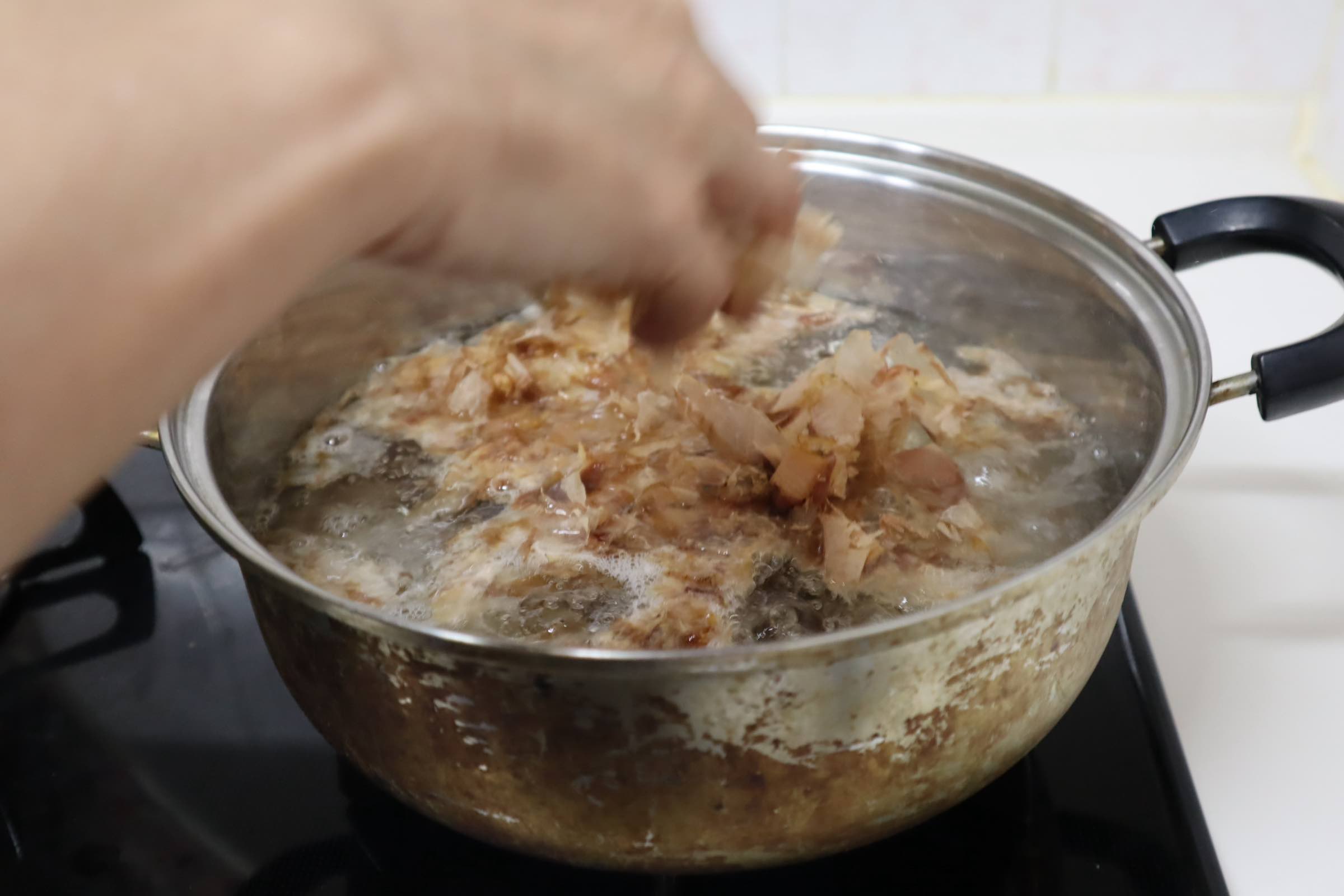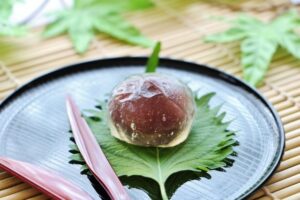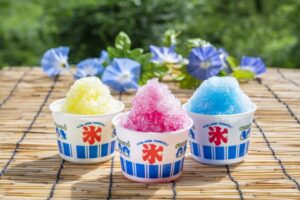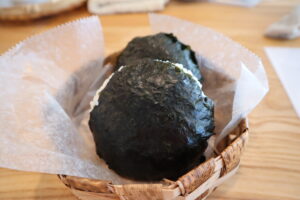Once you’ve mastered making Dashi, you’re one step closer to becoming a master of Japanese cuisine. It is a crucial element in Japanese cooking, often referred to as a soup stock used in various dishes such as Miso soup, Udon, simmered dishes, and Dashimaki tamago (Japanese rolled omelette). With Dashi, you can create delicately flavored dishes that allow the natural essence of the ingredients to shine without the need for heavy seasoning.
Today, I’ll share with you how to make it and use it to prepare Miso soup and Dashimaki tamago.
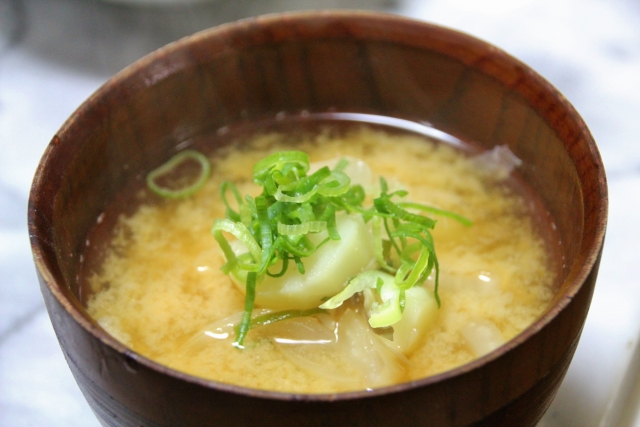

Characteristics and Types of Dashi
Firstly, achieving delicious Dashi largely depends on the water in Japan, which is known as soft water. Unlike the hard water found in Europe, India, and China, which contains high levels of minerals and magnesium, Japan’s soft water allows for optimal Dashi extraction without producing any unwanted bitterness. So, if you’re in Japan, I highly recommend trying to make it yourself.
Now, let’s talk about its characteristics. While French and Chinese broths often require hours of simmering to develop flavor, Japanese Dashi can be made effectively in a short amount of time. For instance, using bonito flakes takes just about 5 minutes. This quick extraction is due to the complex compounds present in dried ingredients, which develop during the aging process. Additionally, Japanese Dashi is characterized by its lack of oil content.
There are several types of it: Kombu (kelp), Shiitake mushrooms, Niboshi (dried baby sardines), and Katsuobushi (dried bonito flakes).Please read the page linked here for more details.
Today, let’s try making using Kombu and Katsuobushi.
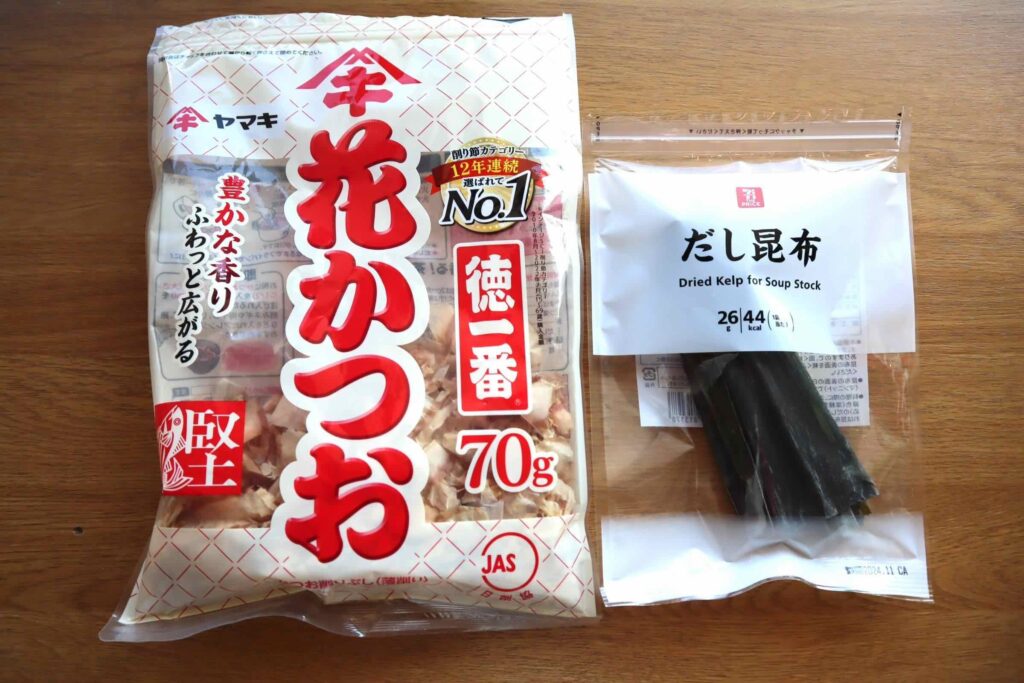
The combined Dashi of Kombu and Katsuobushi
First, let’s start with Kombu.
It is a type of seaweed that grows in the ocean. You can find dried it in the seasoning or dried goods section of supermarkets. Look for black, firm, thin, and lightweight pieces, typically around 10 to 15 centimeters in length, and priced at around 500 yen. While there are premium varieties used in high-end restaurants, the ones available at supermarkets will suffice for our purposes.
Next, let’s prepare the Katsuobushi. You can find it near the Kombu at the supermarket. Look for light brown, fluffy flakes, usually priced under 500 yen. It is made from bonito fish, where the heads and entrails are removed, boiled, smoked, and then dried to achieve its firm texture. The flakes you find in stores are shaved Katsuobushi known as Hanakatsuo, which impart a delightful fish aroma.
It not only serves as a base for making Dashi but also enhances the flavor of dishes like Okonomiyaki(flour-based dish containing meat and vegetables inside) or Udon noodles.
With Konbu and Katsuobushi on hand, you’re ready to make it! Let’s head to the kitchen.
Now, let’s call in some expert help.
Meet Kaoru Fujiwara, a qualified instructor teaching Japanese cuisine to foreigners. Let’s follow her guidance as we make dashi together.

Recipe for making Dashi
Classic Dashi Recipe:
- Water: 1600ml
- Kombu: 1 piece (about 10 cm)
- Katsuobushi: a handful
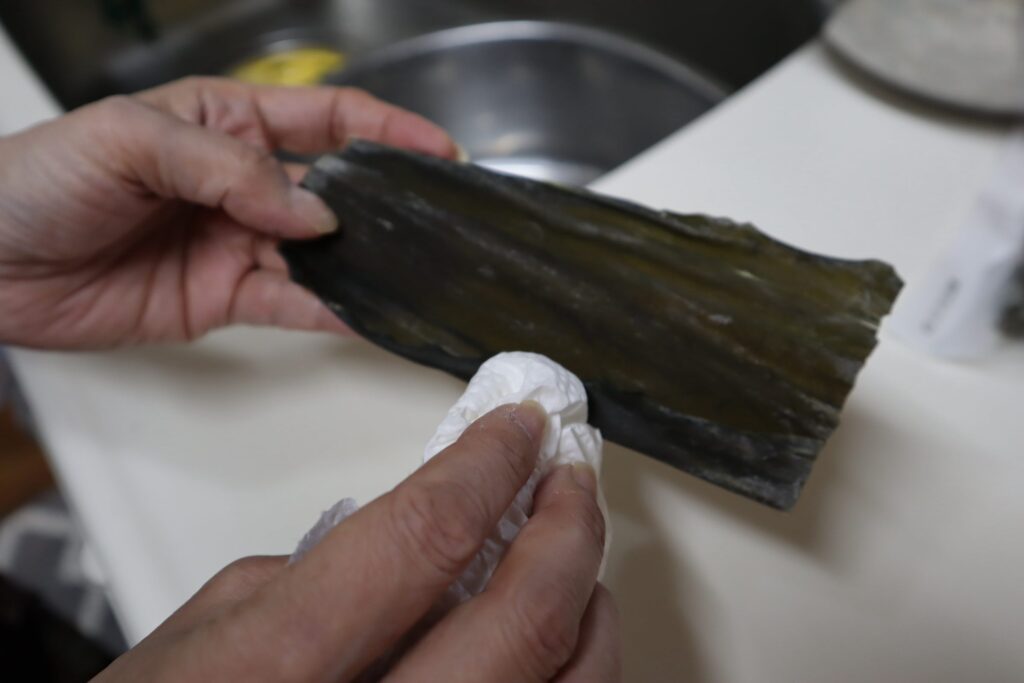
In a pot, add 1600ml of water and the Kombu.Simmer for around 15 mitutes over medium to low heat until it almost comes to boil.Avoid boiling the water vigorously. It should be on gentle heat.
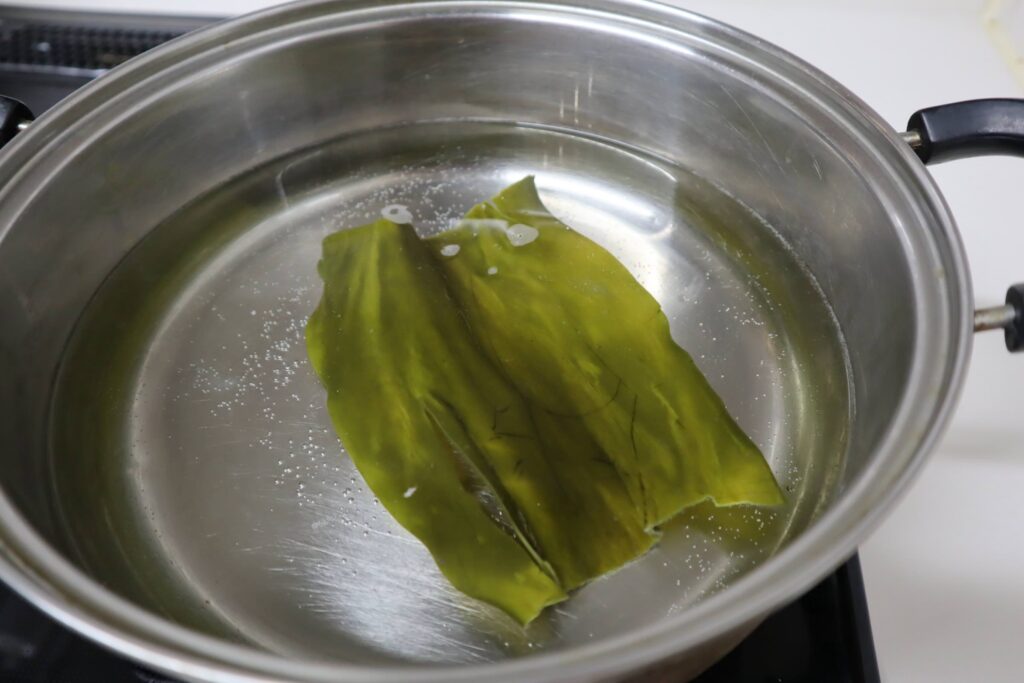
Once small bubbles start forming around the edges of the pot, turn off the heat. Be careful not to let it boil.Remove the Kombu.
Increase the heat and bring it to a mild simmer, then add the Katsuobushi all at once.
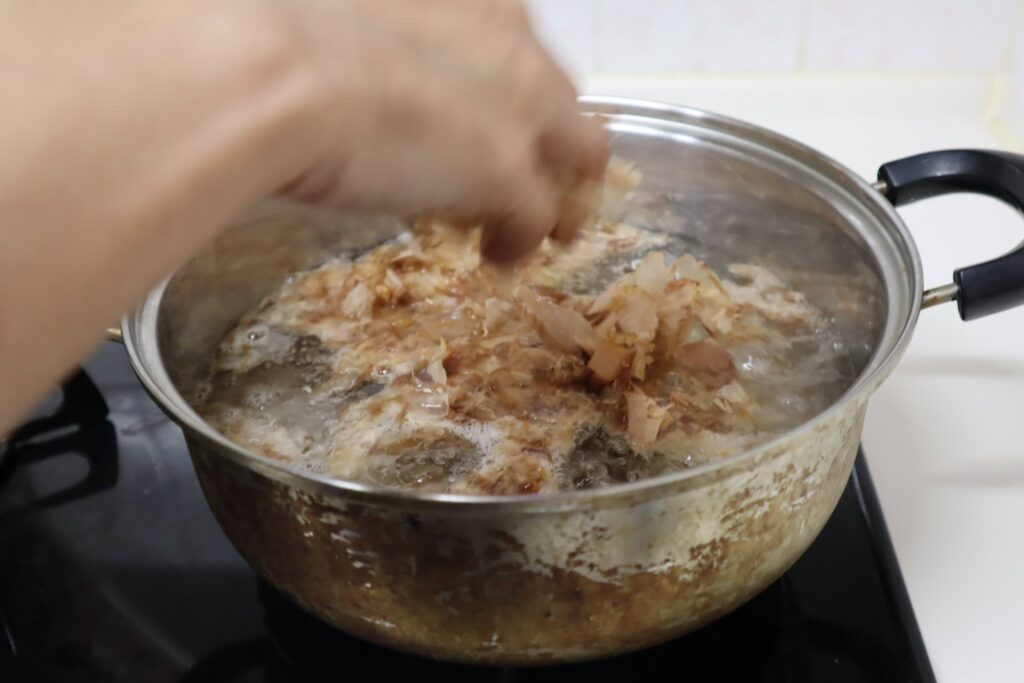
Reduce the heat and simmer for about 2 minutes to remove any impurities (scum). It will dance in the hot water.
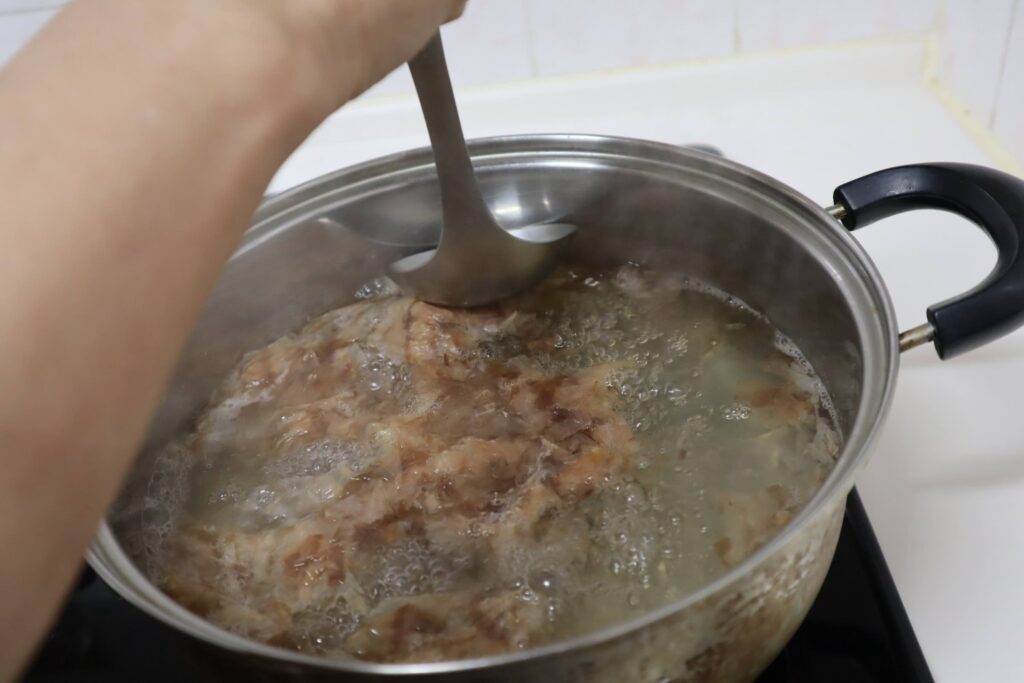
Turn off the heat and let it sink to the bottom of the pot. Then, strain the liquid using a sieve, discarding Katsuobushi. We only use the resulting soup, which is a golden-colored Dashi.
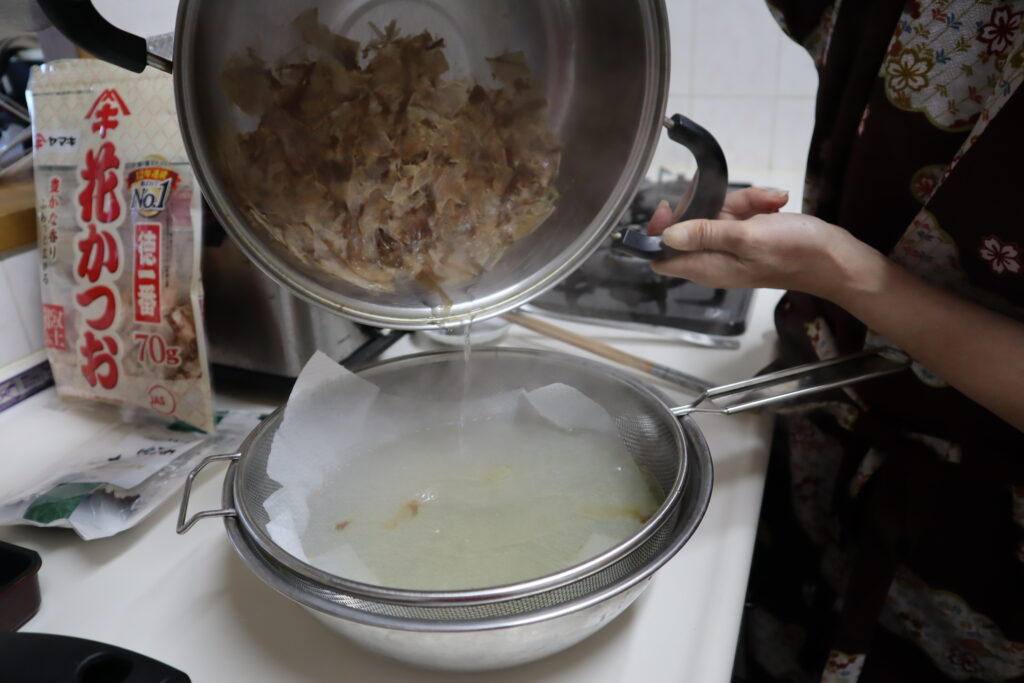

You can taste it as is. Feel the depth of its umami flavor?? This is the quintessential Japanese Dashi.
To be continued in Part 2.

